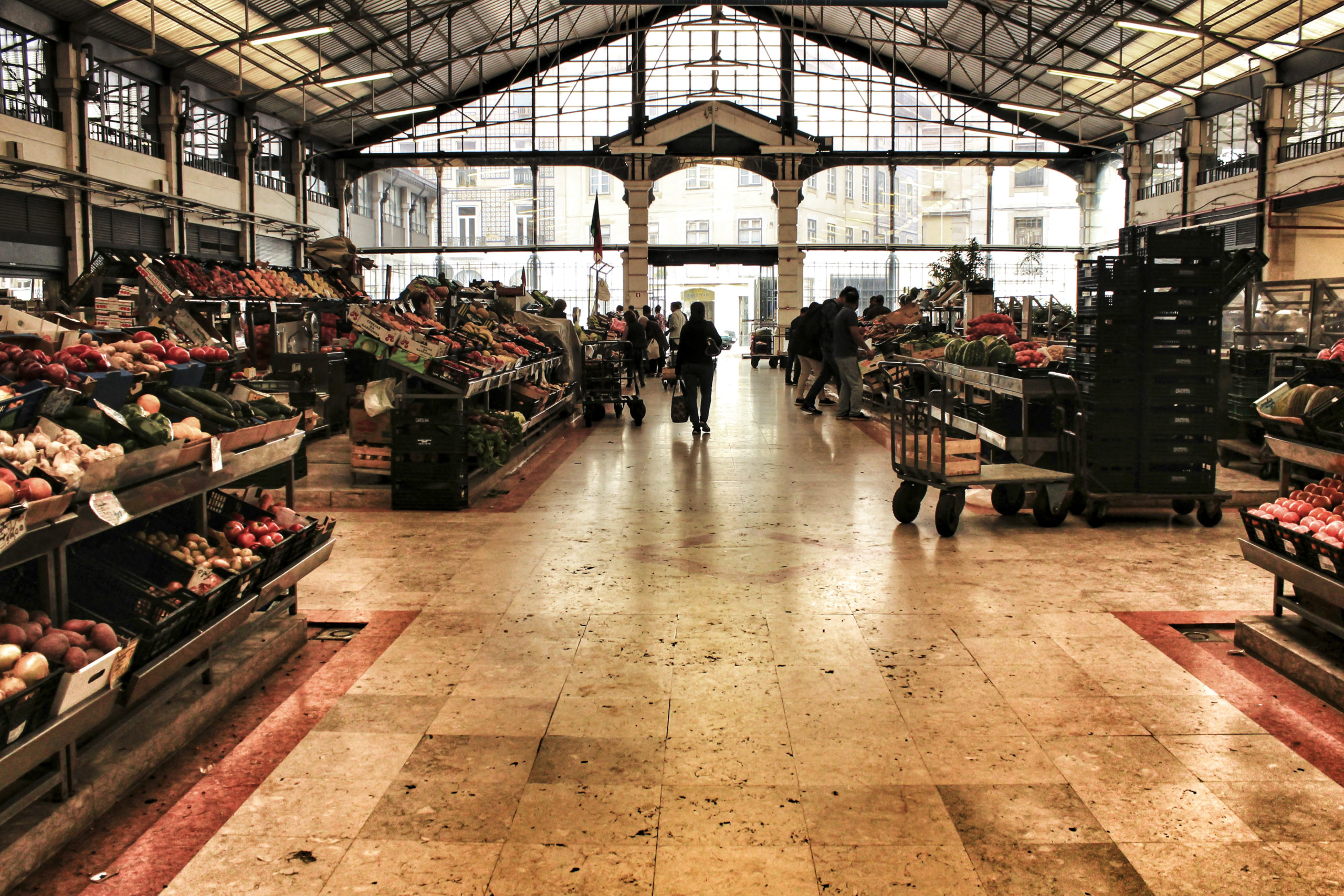The clock reads 4 AM as trucks pull up to Lisbon’s Mercado da Ribeira. Fish boxes clatter against concrete while vendors arrange their stalls under fluorescent lights. The air carries notes of salt and seawater. This daily sequence, unchanged for generations, supplies fresh seafood to Portugal’s capital.
Fishmongers sort their catches with practiced efficiency – each movement refined by years of repetition. They arrange silver-scaled sardines in precise rows, stack red snapper on beds of ice, and position octopus tentacles with careful attention. The market’s concrete floor remains wet, footsteps leaving momentary impressions as workers navigate between stalls.
María Santos adjusts her blue apron, just as she has done each morning for thirty years. “The market tells time differently,” she says, organizing today’s catch. Her hands move with certainty, separating fish by size and quality. Around her, other vendors prepare for the morning’s first customers – restaurant buyers seeking the finest catches for their kitchens.
Inside the Mercado da Ribeira
The market’s iron and glass structure dates to 1882, when architects designed it to serve Lisbon’s growing population. Today, parallel rows of concrete counters divide the space into orderly sections. Each seller maintains their designated area with pride, displaying Portuguese seafood varieties that reflect the Atlantic’s abundance.
Stalls showcase what local waters provide: bacalhau (salt cod) with its distinctive pale flesh, pink-tinged red mullet, and iridescent mackerel. Vendors arrange shellfish in careful displays – clams from the Tagus estuary, mussels harvested along rocky coastlines, and prawns brought in from deeper waters.
The price tags, handwritten in precise numerals, reflect daily changes in availability and demand. Regular customers know to watch these numbers, which tell stories about weather conditions, fishing success, and seasonal variations. Some sellers maintain small chalkboards, updating prices as supply shifts throughout the morning.
From sea to city
Lisbon’s fishing industry operates through an intricate network of relationships. Small boats leave nearby ports before midnight, timing their returns to supply the morning market. Larger vessels spend days at sea, coordinating their arrivals with market demands. This system, developed over centuries, continues to adapt while maintaining its essential character.
Local fishing communities from Cascais to Setúbal contribute to the market’s inventory. Each area specializes in particular catches, based on local conditions and traditional expertise. These relationships between fishermen and market vendors often span generations, built on mutual trust and shared knowledge of the sea.
The market serves as a crucial link between marine resources and urban needs. Vendors work with fishing crews to maintain sustainable practices, understanding that their future depends on healthy fish populations. They share knowledge about seasonal variations and help customers understand why certain species become temporarily unavailable.
Market culture beyond commerce
Conversations at the market mix Portuguese with gestures universal to trade. Regular customers greet vendors by name, exchanging news while selecting their purchases. These interactions preserve social connections that modern supermarkets rarely cultivate.
Family histories intertwine with market operations. Children learn from parents and grandparents, absorbing knowledge about fish quality, preparation methods, and business practices. Many stalls display faded photographs showing earlier generations at the same counters, visual reminders of continuing traditions.
The market’s language includes specialized terms for cuts, qualities, and preparations. Customers request specific portions using vocabulary passed down through years of market visits. This shared terminology maintains precision in transactions while preserving cultural heritage.
Modern meets traditional
Contemporary food safety standards now govern market operations, but traditional knowledge remains essential. Vendors balance modern refrigeration with time-tested methods for evaluating freshness. They adapt to changing customer preferences while maintaining traditional preparation techniques.
Restaurant chefs arrive early to select premium catches, their choices influencing Lisbon’s dining scene. Home cooks follow later, many carrying shopping bags their grandparents might recognize. The market adapts to new payment systems and hygiene requirements without losing its fundamental character.
Digital displays now show auction prices in some sections, yet vendors still rely on experience to gauge quality. They maintain traditional practices while incorporating necessary changes, ensuring the market remains vital to Lisbon’s food distribution system.

